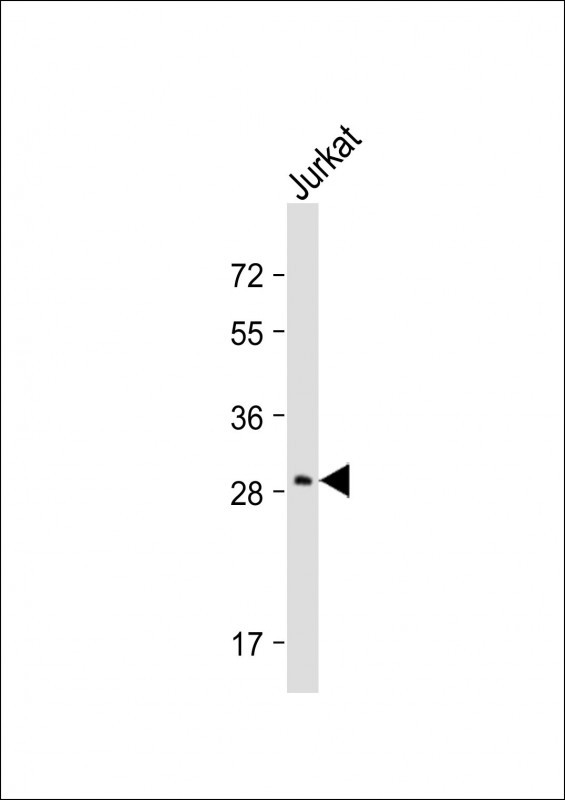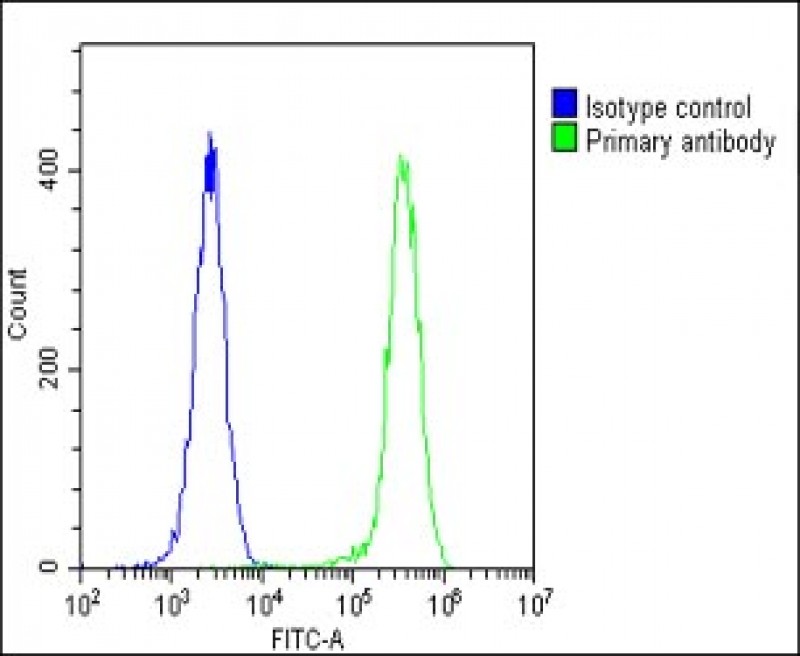

| WB | 咨询技术 | Human,Mouse,Rat |
| IF | 咨询技术 | Human,Mouse,Rat |
| IHC | 咨询技术 | Human,Mouse,Rat |
| ICC | 技术咨询 | Human,Mouse,Rat |
| FCM | 1/25 | Human,Mouse,Rat |
| Elisa | 咨询技术 | Human,Mouse,Rat |
| Aliases | Aquaporin-5, AQP-5, AQP5 |
| Entrez GeneID | 362 |
| WB Predicted band size | 28.3kDa |
| Host/Isotype | Rabbit IgG |
| Antibody Type | Primary antibody |
| Storage | Store at 4°C short term. Aliquot and store at -20°C long term. Avoid freeze/thaw cycles. |
| Species Reactivity | Human, Mouse, Rat |
| Immunogen | This AQP5 antibody is generated from rabbits immunized with a KLH conjugated synthetic peptide between 227-256 amino acids from the C-terminal region of human AQP5. |
| Formulation | Purified antibody in PBS with 0.05% sodium azide. |
+ +
以下是关于AQP5抗体的3篇参考文献及其简要摘要:
1. **文献名称**: "Aquaporin-5 in salivary glands: potential role in Sjögren’s syndrome"
**作者**: Soyfoo MS, et al.
**摘要**: 研究使用AQP5特异性抗体分析干燥综合征患者唾液腺中AQP5的表达,发现其表达显著降低,提示AQP5功能障碍可能参与疾病发生。
2. **文献名称**: "Immunolocalization of aquaporin-5 in rat and human lung tissue using a novel antibody"
**作者**: Nielsen S, et al.
**摘要**: 报道一种新型AQP5抗体的开发与验证,通过免疫组化证实AQP5在肺泡上皮细胞中的定位,为肺部水转运机制研究提供工具。
3. **文献名称**: "AQP5 promotes tumor metastasis in colorectal cancer by activating the EMT process"
**作者**: Zhang Z, et al.
**摘要**: 通过Western blot和免疫荧光(使用AQP5抗体)发现AQP5在结直肠癌中高表达,并通过调控上皮-间质转化(EMT)促进转移。
4. **文献名称**: "Role of AQP5 in airway surface liquid homeostasis revealed by antibody-based detection in murine models"
**作者**: Song Y, et al.
**摘要**: 利用AQP5抗体研究小鼠气道黏膜水通道蛋白分布,发现AQP5缺失导致黏液分泌异常,影响气道表面液体平衡。
这些研究均通过AQP5抗体探究其在不同生理或病理状态下的表达及功能,涵盖疾病机制、分子定位及治疗靶点探索。
Aquaporin-5 (AQP5) is a member of the aquaporin family of transmembrane water channel proteins that facilitate selective water transport across cell membranes. Expressed primarily in epithelial and secretory tissues—such as salivary glands, tear glands, respiratory tract, and corneal epithelium—AQP5 plays a critical role in maintaining fluid homeostasis, lubrication, and osmotic balance. Structurally, it consists of six transmembrane domains with intracellular N- and C-termini, forming a pore that allows passive water movement while excluding ions and other solutes. Dysregulation of AQP5 has been linked to pathological conditions, including Sjögren’s syndrome (reduced expression in salivary glands), cystic fibrosis, asthma, and cancer metastasis (due to its role in cell migration).
AQP5 antibodies are immunological tools used to detect, quantify, and localize AQP5 in research and diagnostic contexts. They are essential for studying protein expression patterns, tissue-specific distribution, and functional alterations in disease models. Commonly employed in techniques like Western blotting, immunohistochemistry, and immunofluorescence, these antibodies help elucidate AQP5’s involvement in physiological processes and its potential as a therapeutic target. Commercial AQP5 antibodies are typically raised in hosts like rabbits or mice, targeting specific epitopes within the protein’s extracellular or intracellular domains. Validation for specificity and cross-reactivity is critical, as off-target binding can confound experimental results. Recent studies also explore AQP5 antibodies in biomarker discovery for diseases like salivary dysfunction or cancer prognosis.
×